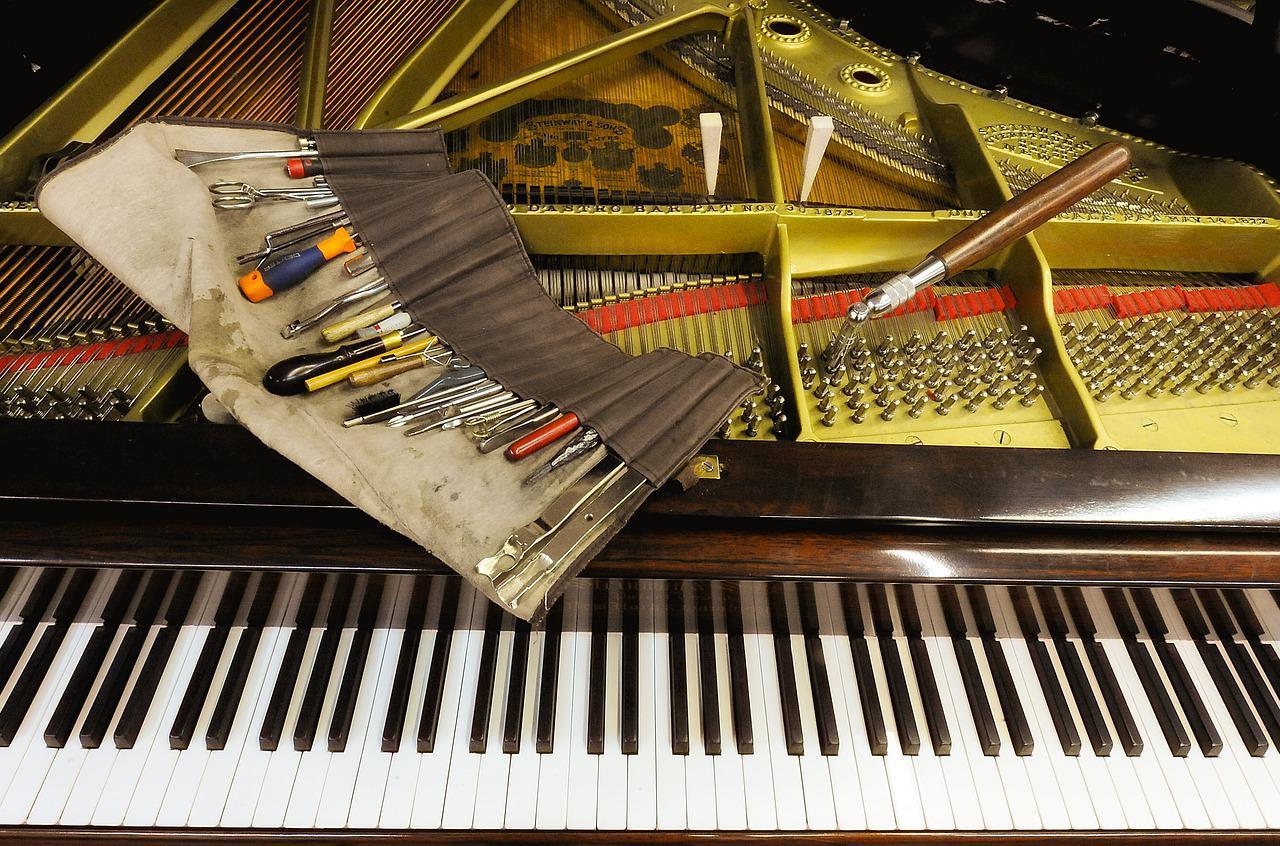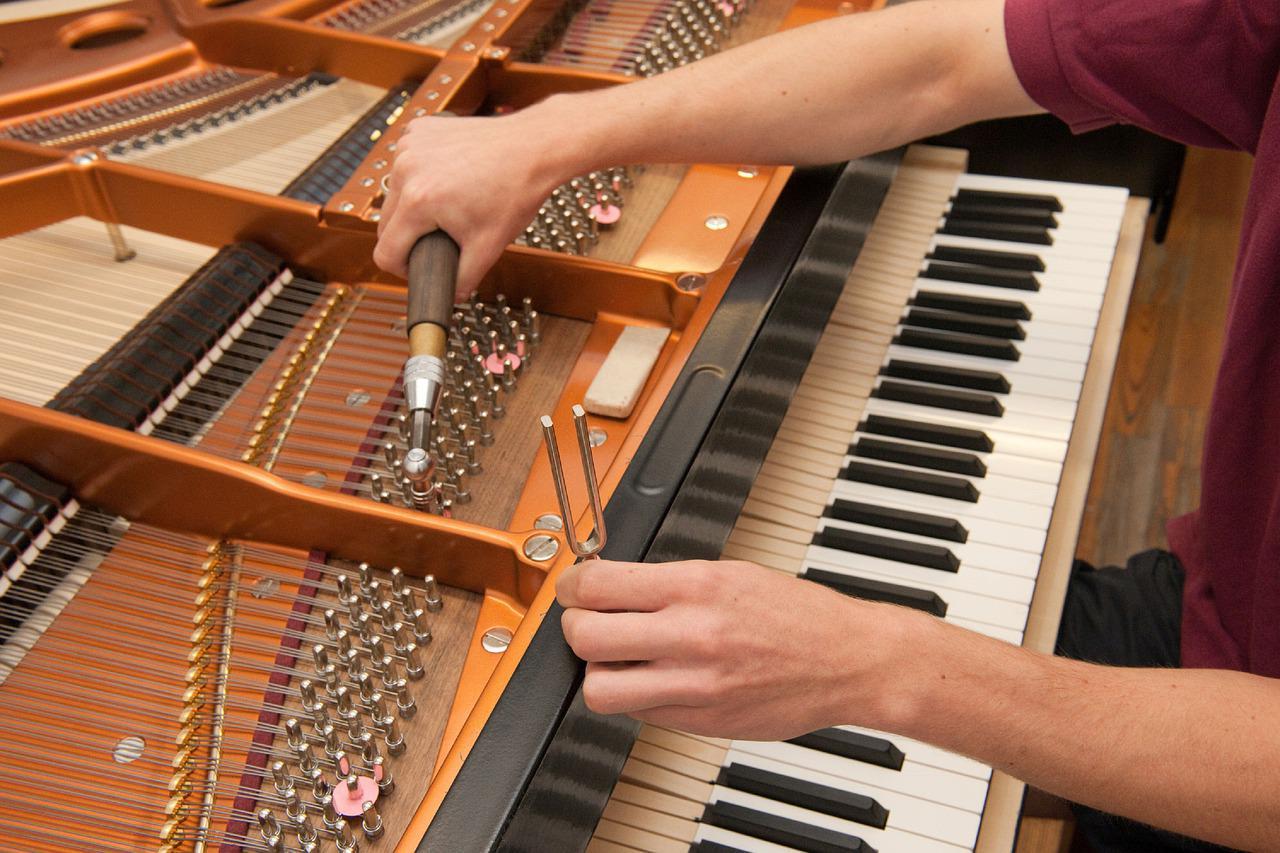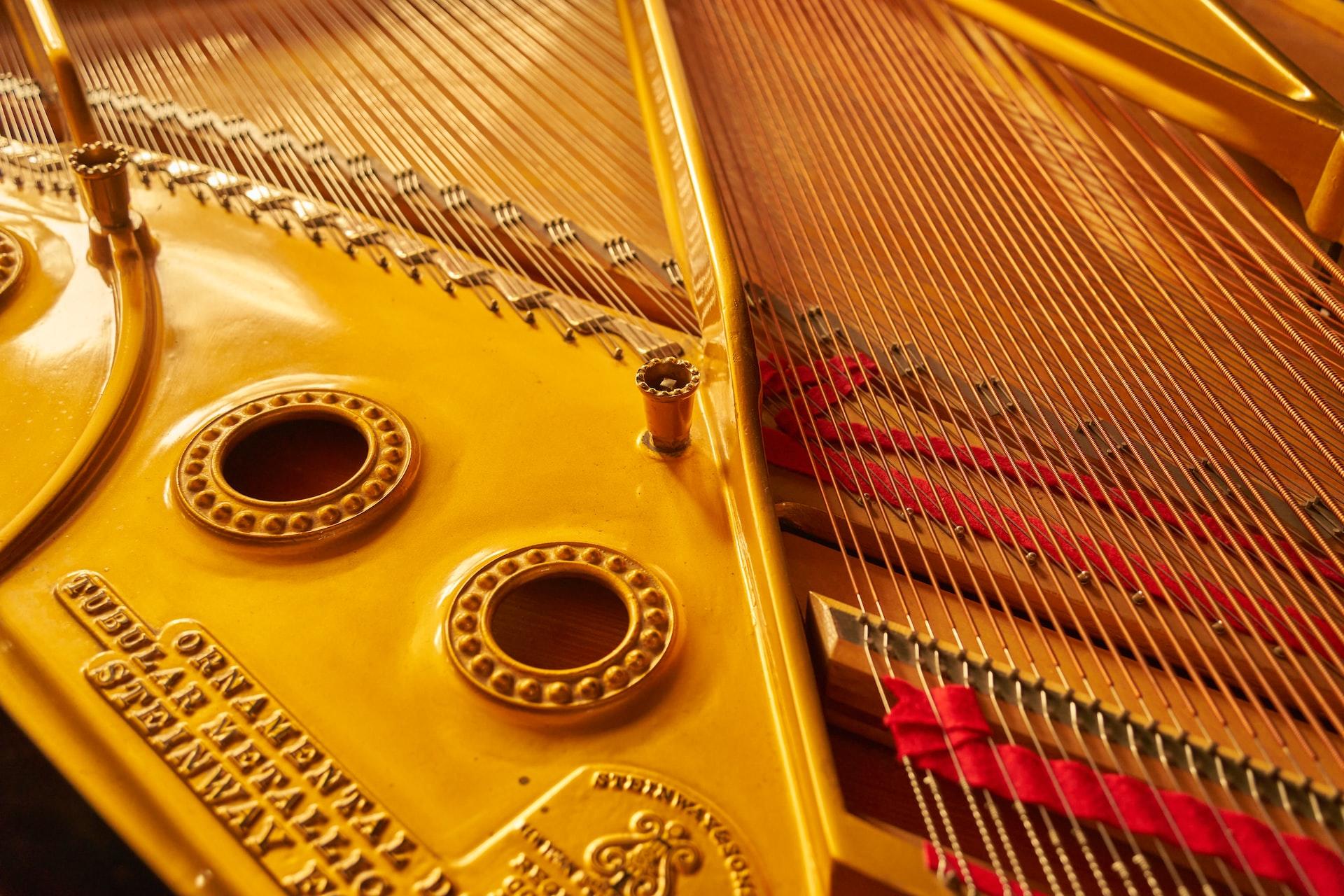"An actor is like a piano. It should be well tuned, but shouldn't be hit too hard." — Monica Bellucci
Just like an actor needs to perform their role properly, the inner workings of the piano need to perform properly.
Whether you have an upright piano or a grand piano, keeping a piano in tune can seem like an impossible mission if you don't have the proper tools or if you don't take the necessary precautions while using them.
When you're buying a new or a used piano, you might not know if there have been any influences affecting the quality of the tune: humidity, temperature variations, movements, and time since last tuned.
While it’s perfectly reasonable to have your instrument serviced only by a professional piano tuner or technician, you can learn about DIY tuning. Perhaps you’ll find that it’s a skill that you are able to perform!
Accomplishing this task with your own hands is well within your reach if you, as a beginner, pay close attention to what you're doing.
Tuning your new piano—whether it's a Steinway, Kawai, Yamaha Clavinova, a Disklavier upright, a Bechstein, a baby grand, a spinet, or anything else, used, new, or restored—requires time, patience, agility, practice, proper tools, and above all else a perfect ear.
You can look out for some of the best piano classes in Rajkot here.


Do You Need the Services of a Piano Technician?
If you are at all uncertain of your ability to tune your piano, then you should hire a technician. It’s better to spend the money on a professional who won’t ruin your piano than to try to save some money and end up hurting yourself and your instrument. For example, if you’re new to playing piano, I would not suggest trying to tune it yourself. Stick with the music for now!
However, if you’re familiar with the concept of piano tuning and confident that you can manage, then you can try it yourself and see how it goes. But don’t be afraid to admit defeat if it’s just not working for you, and call in reinforcements.
You can also learn more about tuning by observing and talking to your piano technician, and maybe even hire them to give you some advice.
In this age of the internet, it’s possible to look up countless DIY articles -like this one!- and teach yourself any number of skills.
On the web, you can find, for example, Scott Detwiler's helpful resources for tuning a piano yourself.
One thing to keep in mind is that although learning to tune your piano will save you money in the long run, it can be expensive upfront as you need a lot of specialized tools. It will also take a few tries for you to get really good, and take a lot of time: 220 strings and 88 notes is not an easy feat!
Doing it yourself requires a perfect ear, a deep understanding of harmony, the octaves, and the chords of an acoustic piano, as well as some practical know-how. Learning all of these concepts intimately requires a lot of practice. Learn more about them with classes, videos, and books on the subject.
Having a piano tuned will cost between $100 and $150 per hour which is around Rs. 5000 to Rs. 6000 in India, and can take a couple of hours of work.
A beginner pianist hoping to get started learning to tune a piano will certainly spend more than three hours doing it, because you have to master the intervals of the notes and musical theory—minor and major chords, first and third degree, fundamental notes, thirds, fifths, sevenths, ninths, etc.—as you go, but it's enriching training! You’ll certainly gain a deeper understanding of the inner mechanisms of the piano as well as grow innately attuned to the proper sounds each key should make.
If you are looking for online piano classes then you must try Superprof, choose your teacher by sitting in the comfort of your home.
Find out about effective piano classes in Patna here.

What Tools Do You Need to Tune a Piano?
You don't tune a piano the same way you tune a guitar: the piano has 220 strings for its 88 keys, whereas a guitar has just six, twelve at maximum...
To face the challenge, head to the nearest music store to get the specialized tuning materials.
Do not use homemade tools.
A professional technician can spend several years training to tune pianos, including the use of professional tools.
Using wrenches or screwdrivers that are not made specifically for the job could damage the machinery and the tuning pegs of the instrument.
These are the tools you'll need to buy from a music store in order to tune your piano when you're still a beginner:
- One intangible and crucial tool: time! Adjusting the tuning pegs requires a special touch.
- A chromatic tuner: better than a tuning fork, an electric tuner gives you the perfect A440 frequency.
- A tuning fork.
- A tuning chart.
- A tuning wrench—or tuning key, or tuning hammer—with sockets of the corresponding diameter for the tuning pegs on the piano (whether square, rectangular or star-tipped). Choose one with interchangeable sockets.
- Tuning wedges, or felt strips: pieces of rubber used to block two strings of a note while tuning the third in the same note.
- Plastic clamps to slide into the mechanics, to muffle two strings simultaneously.
- A good source of light to illuminate the many dark places inside the piano.
When you've obtained all of these accessories, you can get to the heart of the matter: doing the prep work to tune your piano.

What Precautions Should Be Made to Tune a Piano?
To get through the tuning process, a certain number of precautions should be scrupulously implemented, so you don't hurt yourself, damage the tuning pegs, the mechanics, or the strings.
Discover different piano lessons on Superprof.
Here are a few:
- Only an adult should attempt to tune a piano.
- Wear gloves and construction goggles or glasses to avoid injuries: some of the metallic parts of the piano's frame and structure could be sharp and cut you, and a snapped string can hit an eye easily.
- Practice before you start tuning: set the wedges—or blocks of felt—between the strings, look over the soundboard and fixtures.
- Don't touch the strings too much: even if it's rare for a string to break, it can happen on older, used pianos, and too much tension on a string can cause it to snap and injure you.
- Be careful not to damage the hammers, the tuning pegs, the damper, and the mechanics.
- Be astute and concentrate: quick movements could be counter-productive, as moving quickly could cause you to improperly tune a string in the wrong tone (A flat instead of A sharp, for example).
- Know which direction to turn the tuning pegs in: to the right increases the tone, to the left diminishes it.
- Know which string you're working on.
Why should you take these precautions?
Piano tuning requires a calm, methodical approach. The gap between certain notes can be very small—this is why you need a tuning chart—and it needs high-quality sound to be achieved perfectly.

5 Steps for Tuning a Piano
Now that you have everything you need to tune a piano, you can get started!
The first key you’ll want to tune is middle A (A440). To prep the string, depress the strong pedal and place a wedge or plastic clamp between the strings. The neighboring strings to the one you are working on need to be immobilized.
This preparation will need to be done with each key. Once the prep is ready, you are ready to begin tuning!
Here are the 5 easy steps to tuning a piano:
- Focus first on the middle string of the three-string group. Play the note firmly by releasing the strong pedal (to avoid vibrating the other strings on the soundboard). Observe the tonality with the help of chromatic tuner: is the note too high or too low?
- Begin turning tuning peg gently but firmly (a twelfth of a rotation, one hour on a clock dial). Remember: turning to the right increases the tone, to the left diminishes it.
- Tune all the notes within this octave at the center of the keyboard in this way. Move on to the higher octave, then to the lower.
- Compare the tuned notes of one octave to those of another: low E and E sharp can't produce low E and F or G sharp.
- Tune the following octaves by ear.
Some advice as you tune:
Before tightening a string to modify the tonality of a note, relax it a bit before tightening: in case you make a mistake with the string, you won't risk breaking it under too much tension!
Strongly press on the key as you adjust the note to tune it: a tap that's too weak could mean you knock the instrument out of tune as soon it's strongly played later on.
Can You Break a Piano String?
Breaking a piano string is very rare, but possible. And it can happen on older, used pianos if a string is worn out.
If the tuning peg is turned too far to the right, then the string, too taut, can break. The tension is so strong that it can cut the hand or face of the tuner as it happens.
So be careful! Remember to wear proper safety equipment! Gloves and eye protection are a must! It’s better to wear bulky goggles and not need them than to not wear them and lose an eye.
If your string does snap, you'll need to entrust the instrument to a piano technician and their expert services.
For those hoping to embark on this challenge on your own as much as possible, you could learn how to change a string online, but it's a slow, difficult, and delicate job.

How to Maintain Your Piano Daily
The best maintenance in any situation is preventative. Though daily maintenance of your piano won’t keep you from needing regular tunings, it can help extend the life of your instrument.
- Ensure you perform regular tunings. Some specialists suggest that it's necessary to tune your piano at least once every three months, so four times per year. Others advise adjusting one or two strings every two months.
- Protect your new piano from sunlight, humidity, or any source of heat, like radiators. (Piano movers are notoriously expensive, so put it in the right place when you first get it delivered from the piano company.)
- Keep the temperature consistent. Fluctuating heat and cold can damage the tune as well as cause parts to break.
- Regulate your piano. Tuning isn’t the only adjustment that the instrument will need over the course of its life. Pay attention to the performance to know when you need to replace felt, cloth, or other parts of the piano that are not strings.
- Avoid putting heavy objects on the top of your piano. It looks like the perfect place to keep an ornament or vase of flowers, but the weight of those objects can dampen the sound and affect the quality of your music. Not to mention that if a vase of flowers were to spill, the water would irreparably damage the surface and maybe the inner parts!
- Keep the keys clean. Regularly wipe the keys down gently with a cleaning solution to both remove grime, debris, and germs. Getting something stuck in between the keys is obviously not good. And having sticky, discolored keys is unappealing to everyone.
- Play regularly! The best way to learn how your piano feels, behaves, and performs normally is to play. Why have a piano if you’re only using it for decoration? Learn how to begin picking up piano easily on Superprof.
When you embark on the quest to become a pianist, you will naturally learn to understand your instrument more than just how to press the keys. Take good care of your instrument, and it will bring you years of joy as you learn piano improv tips, sonatas, your favorite pop songs, or whatever else you desire.















